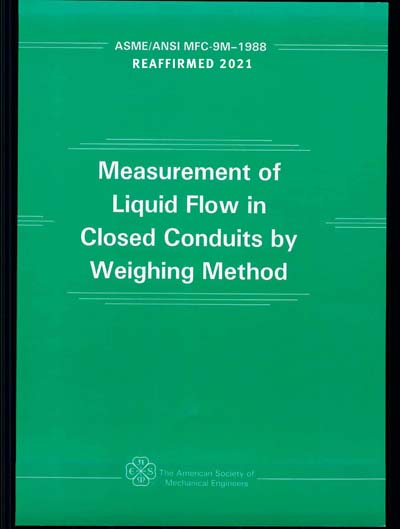Most recent
ASME MFC-9M-1988 (R2021)
Measurement of Liquid Flow in Closed Conduits by Weighing Method (with Errata)
This Standard specifies a method of liquid flow rate measurement in closed conduits by measuring the mass of liquid delivered into a weighing tank in a known time interval. It deals in particular with the measuring apparatus, procedure, and method for calculating the flow rate and the uncertainties associated with the measurement. The method described may be applied to any liquid, provided that its vapor pressure is such that any escape of liquid from the weighing tank by vaporization is not sufficient to effect the required measurement accuracy. Closed weighing tanks and their application to the flow measurement of liquids of high vapor pressure are not considered in this Standard. This Standard considers only the measurement techniques and does not address any possible hazards involved in handling the liquid involved. Theoretically, there is no limit to the application of this method, which is used generally in fixed laboratory installations only. However, for economic reasons, typical hydraulic laboratories using this method can produce accurate flow rates of 500 kg/s (3300 lbm/sec) or less. Owing to its high potential accuracy, this method is often used as a primary method for calibration of other methods or devices for mass flow rate measurement or volumetric flow rate measurement, provided that the density of the liquid is known accurately. It must be ensured that the pipeline is running full with no air or vapor pockets present in the measuring section.
American Society of Mechanical Engineers [asme]

